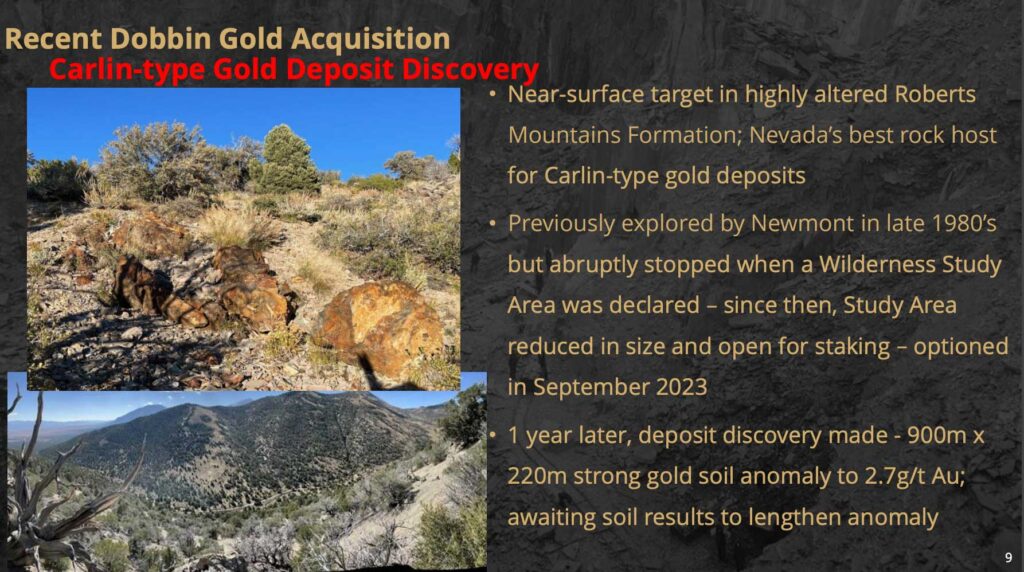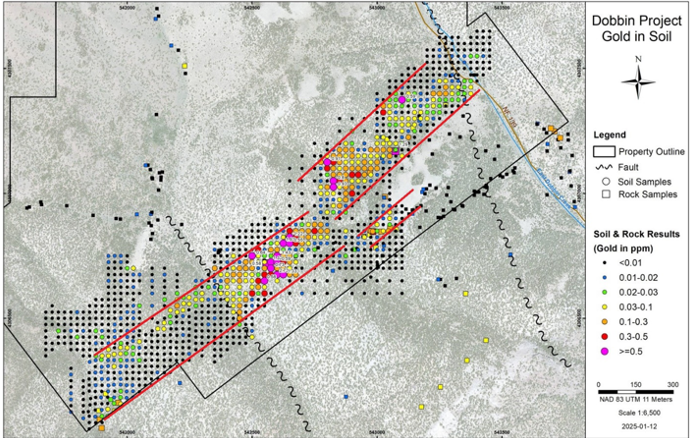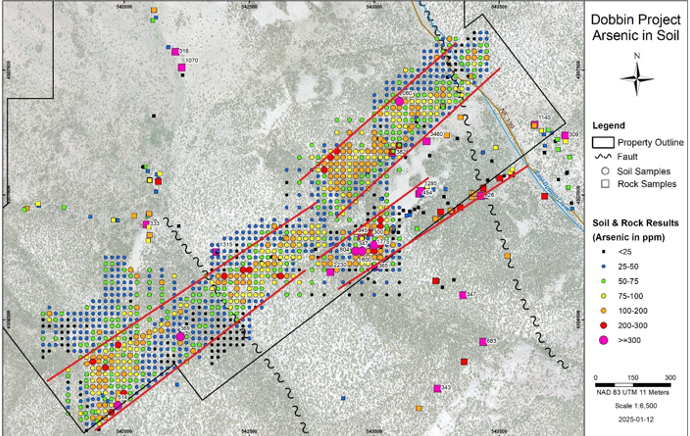Dobbin Gold Project
Dobbin Gold Project

Dobbin Gold Property Description
Phenom has identified a strong 2.1 kilometres long (1.3 miles) and 200 meters (660feet) wide gold in soils anomaly with a large number of values between >0.1 g/t Au up to2.73 g/t Au (approx. 0.09oz/ton) on the Company’s Dobbin Gold Project 80 kilometres southwest of Eureka in central Nevada (see below). The linear anomaly reflects a northeast- trending structure presumed to be subvertical cutting through gently-dipping
Roberts Mountains Formation carbonates, an important host for many Carlin-type gold deposits in central and northern Nevada.
Dave Mathewson, Company director and Geological advisor states, “This is a sizable significant Carlin-style gold system that has potential of multiple associated gold deposits and in my view represents one of the best undrilled gold prospects in Nevada, if not the best.”
Robust gold values in soils persist for 1.3km along the trend suggesting strong gold-bearing parts of the system are at surface in this area. Further to the southwest for 800m, gold is still present in lower but important values as two linears, expressing leakage from below and along the outer edges of the 200m wide system. Elevated arsenic-zinc zones usually form a wider halo around gold cores, which in this segment of the system suggests stronger gold mineralization to be present at depth.


Dave Mathewson, continues, “There are further commentaries for readers to appreciate the magnitude of the Dobbin opportunity. What has been described and seen with these figures and results is very substantial, yet only the two-dimensional look at a big system. The 3rd dimensional context adds real insight and potential size. Multiple favourable stratigraphic host rocks are present at surface and at depth on the property such as the middle and lower Roberts Mountains Formation (more than 200m (660’) thick in this area) and Antelope Formation (known to be up to 418m (1373’) thick in the Monitor Range and a major host in the Eureka Mining District to the north). Where the subvertical feeder structures feed this gold system and cut these specific rock formations, gold can be deposited as multiple brecciated and stacked mineralized zones at various depths, somewhat reminiscent of tree branches off a tree truck. And since the stratigraphy on the property is shallow dipping, gold tends to spread outward flanking from the structure along the favourable shallow dipping stratigraphy. In additional, all Carlin-type gold deposits have high-grade cores that can have dramatic positive economic impacts. This gold system would be no exception. A cross-sectional gold target model showing these potential sizable depth opportunities follows.”
